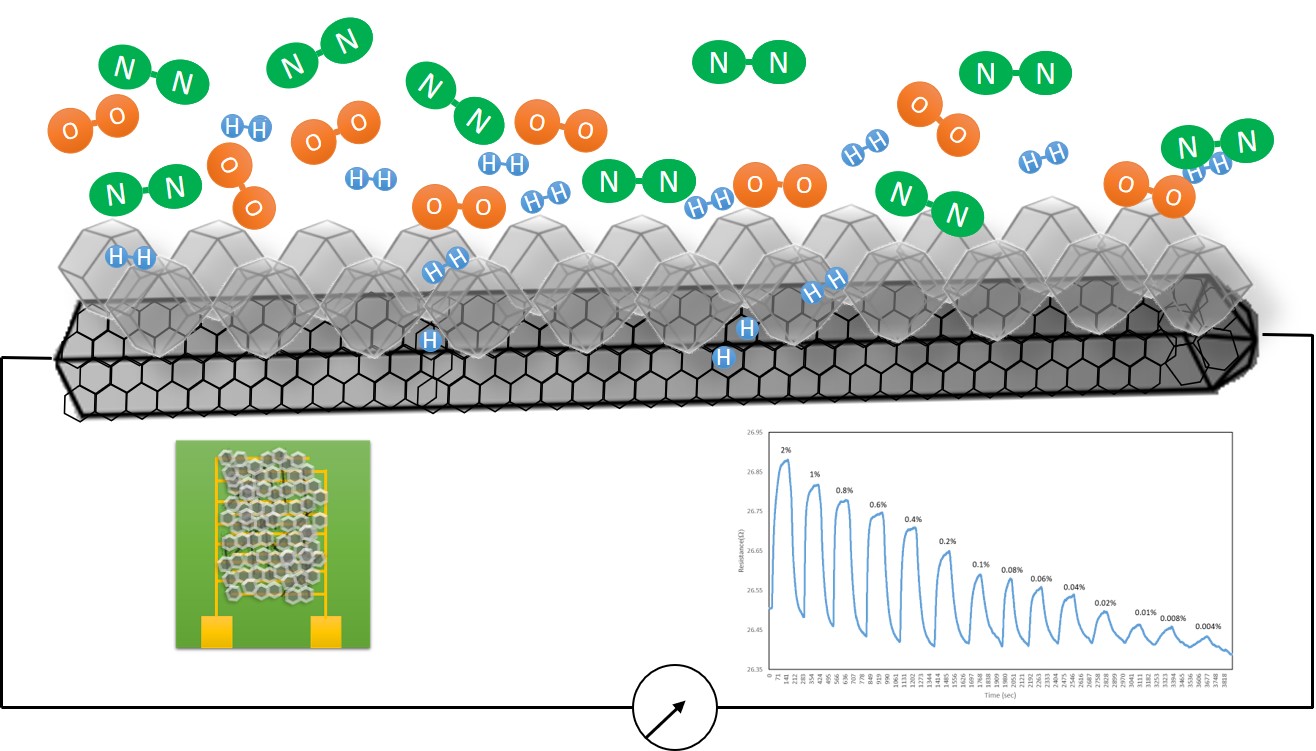2020 Virtual AIChE Annual Meeting
(152c) Palladium Nanowires@Rgo@ZIF-8 Nanocomposite for High-Performance Hydrogen Sensors
Authors
Abhishek Kumar - Presenter, SUNY, Buffalo
Mohammad Moein Mohammadi, University at Buffalo, The State University of New York
Jun Liu, University at Buffalo (SUNY)
Thomas Thundat, University at Buffalo (SUNY)
Mark Swihart, University at Buffalo
Hydrogen forms a highly explosive mixture above 4% concentration in air. Therefore, fast detection of hydrogen in air is of high importance. Palladium has attracted attention as a material for room-temperature hydrogen sensing due to its unique ability to dissociate H2 and form a hydride phase with higher electrical resistance than Pd metal under ambient conditions. However, the oxygen present in air often interferes with H2 detection by generating moisture at the surface of Pd. Moreover, low-cost fabrication of Pd-nanowire sensors often produces sensors with non-monotonic response, due to competing effects of improved contact between nanowires and increased resistance of individual nanowires upon hydrogen uptake. Here, we report the fabrication of fast H2 sensors using a novel ultra-thin and high-aspect-ratio Pd nanowires@reduced graphene oxide (PdNW@rGO) nanocomposite material coated with a layer of zeolite imidazole framework (ZIF-8). The rGO prevents direct contact between PdNWs and provides additional H2-concentration dependent conduction channels, while the ZIF-8 layer limits oxygen transport to the NW surface. High-aspect-ratio Pd nanowires were synthesized in high yield by a hydrothermal method, followed by sonication with GO and subsequent reduction to form the PdNW@rGO nanocomposite. Pd nanowires of high-aspect-ratio increase the sensitivity of the sensor towards hydrogen while the layer of wrapped graphene prevents changes in NW contact resistance (i.e. creation of new conduction channels) due to volume expansion of PdNWs on hydrogen exposure. The ZIF-8 layer acts as a filter screening larger molecules like oxygen and nitrogen while allowing smaller molecules like H2 to go through it. The hydrogen sensors on an interdigitated electrode (IDE) were exposed to concentrations (0.004-2%) of hydrogen diluted in synthetic air. The PdNWs@rGO@ZIF-8 hydrogen sensor showed a high-response of up to 4% resistance increase in air with a response time of 5 seconds to 1% H2 in air and a lower limit of detection (LODH2) of 40 ppm. Relative to other fast Pd-based hydrogen sensors, the proposed solution-phase synthesis of PdNWs@rGO@ZIF-8 nanocomposite offers a combination of low cost and high-performance that is well-suited for applications such as fuel cell vehicles and hydrogen fueling stations.


